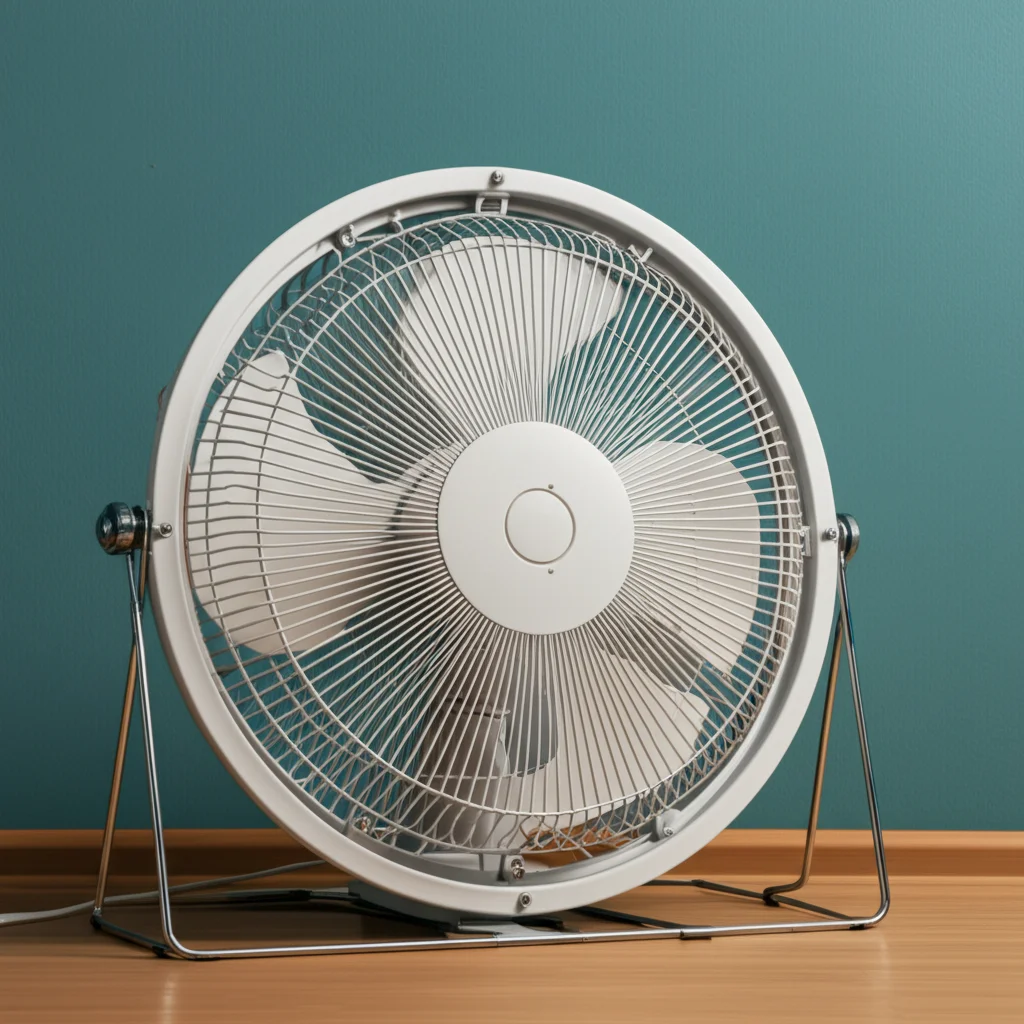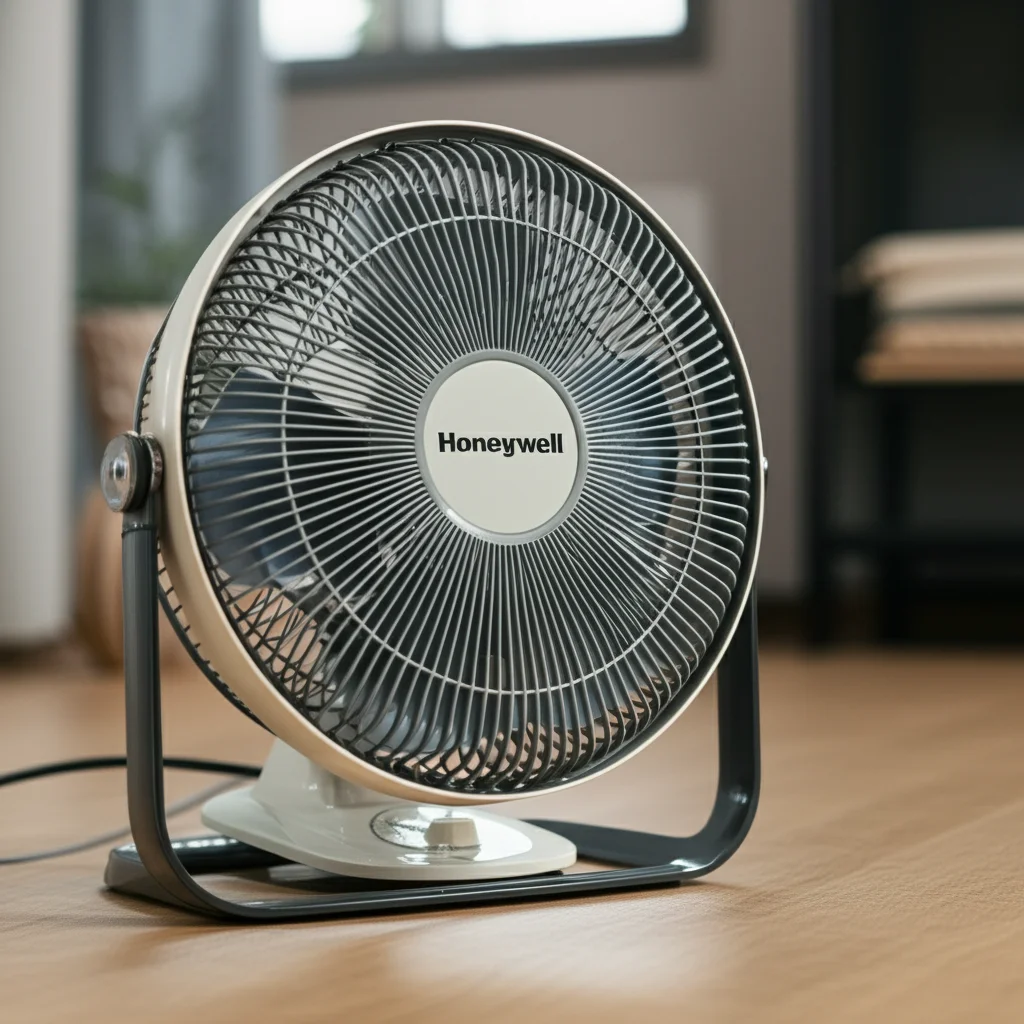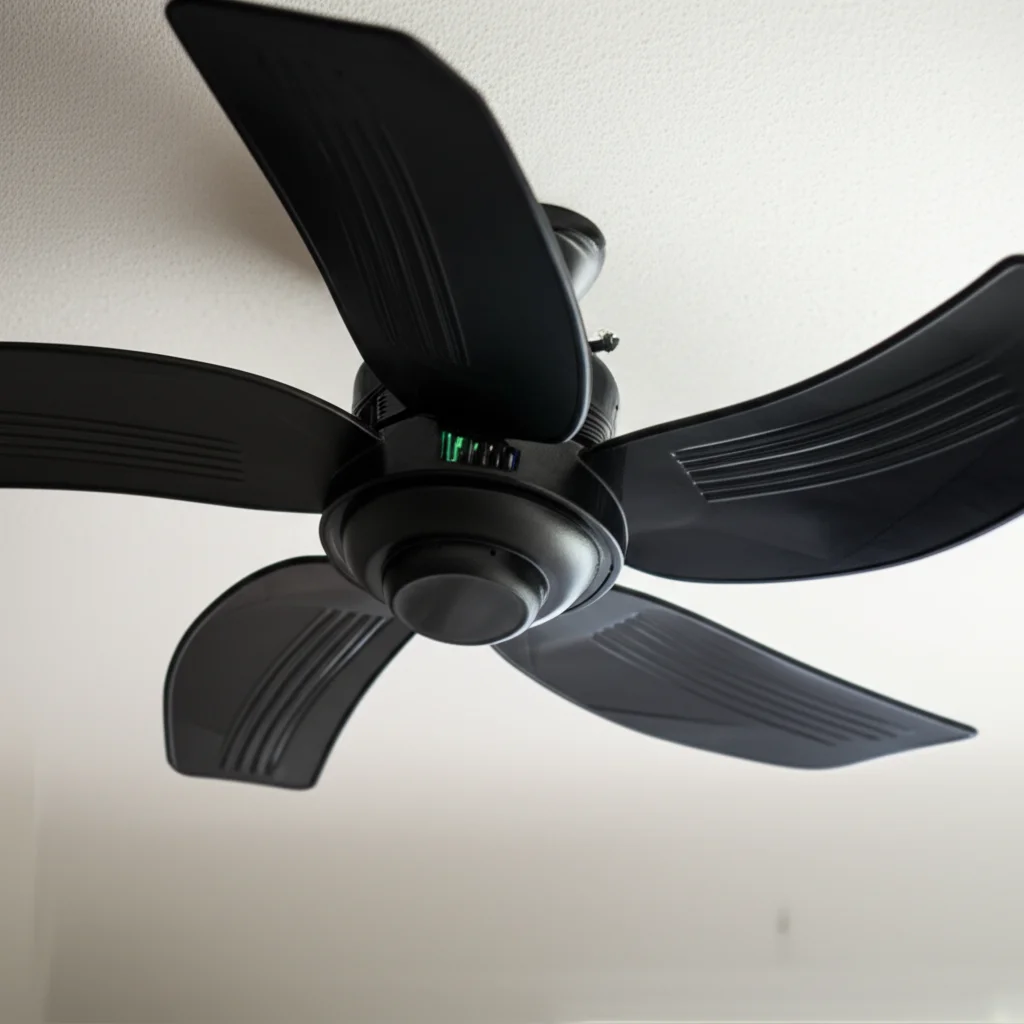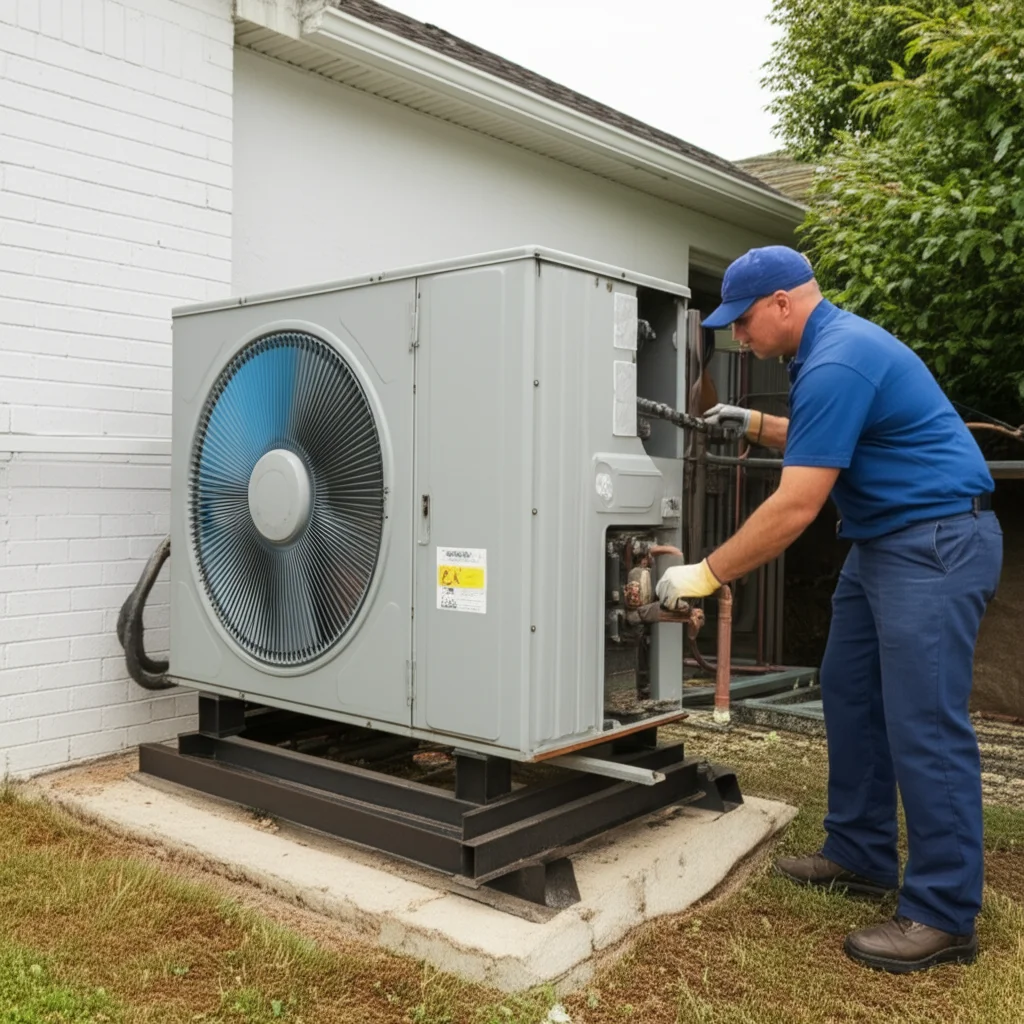· Todd Martin · Home Maintenance · 16 min read
How To Clean A Tower Fan
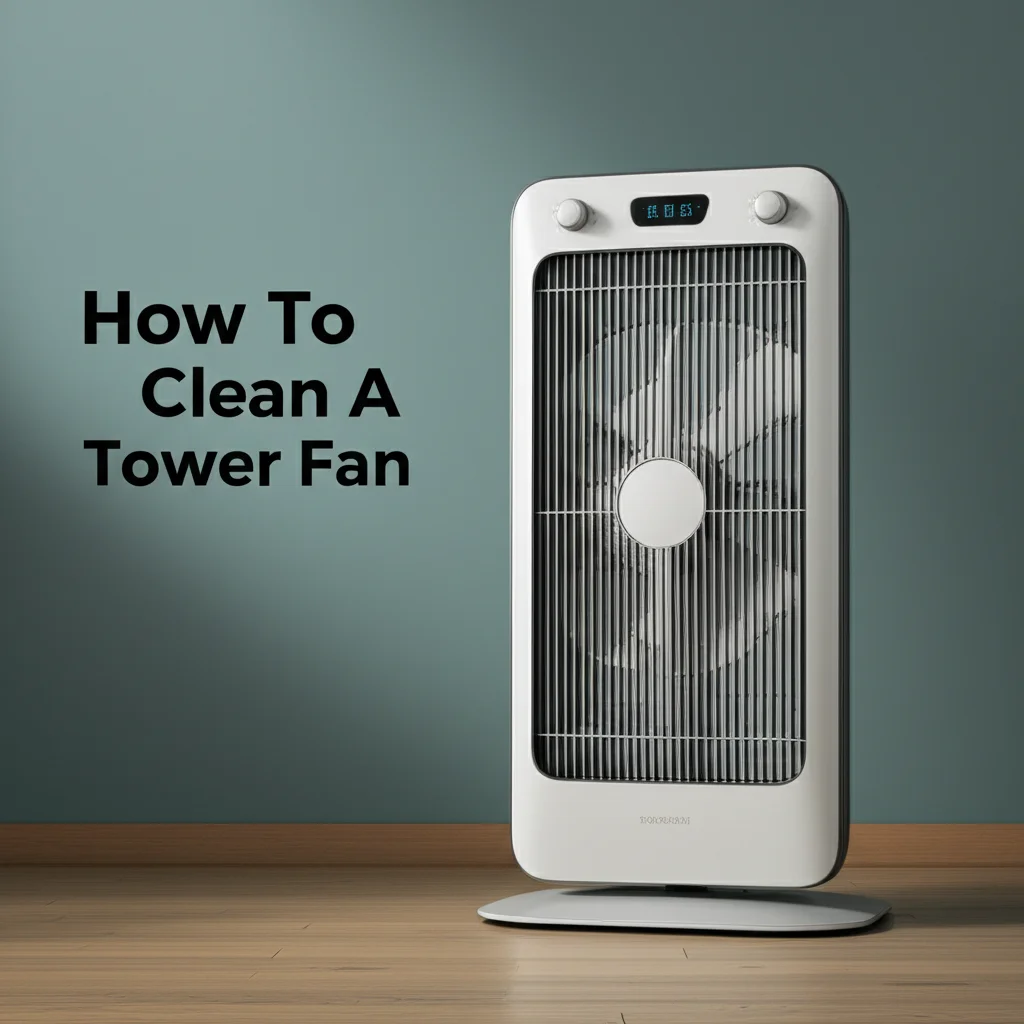
Sparkling Air: How to Clean Your Tower Fan Effectively
A tower fan offers a cool breeze, especially on warm days. Over time, these fans collect dust. This dust reduces airflow and affects indoor air quality. Learning how to clean a tower fan helps your fan run better. It also keeps your home air fresh. This guide walks you through cleaning your tower fan from start to finish. We cover tools, steps, and important tips.
Takeaway
- Unplug your tower fan before starting any cleaning.
- Use a vacuum and compressed air to remove loose dust.
- Wipe down internal components carefully with a microfiber cloth.
- Clean the exterior grille and base to prevent dust buildup.
- Perform regular light cleaning and deeper cleans seasonally.
Cleaning a tower fan involves unplugging it, disassembling the outer grille, and using a vacuum or compressed air to remove accumulated dust from internal components and the fan blades. Wipe down surfaces with a damp cloth, reassemble, and ensure all parts are dry before plugging it back in for improved airflow and air quality.
Why Regular Tower Fan Cleaning Matters
Your tower fan works hard to circulate air. As it operates, it pulls in not just air but also dust, pet dander, and other airborne particles. These particles settle on the fan’s internal components, including the fan blades and motor housing. A dirty fan cannot move air efficiently.
Dust buildup inside a tower fan causes several problems. First, it restricts airflow, making the fan less effective at cooling your space. You might notice the fan feels weaker or less powerful than before. Second, the accumulated dust can act as an allergen reservoir, blowing dust back into your room. This impacts air quality and can trigger allergies or respiratory issues for sensitive individuals.
Furthermore, a dusty fan has to work harder to move air. This increased strain puts stress on the motor. It can lead to higher energy consumption and potentially shorten the fan’s lifespan. Regular cleaning prevents these issues. It ensures your fan runs efficiently, provides clean air, and lasts longer.
Gathering Your Tools: What You Need to Clean a Tower Fan
Before you begin to clean your tower fan, gather the necessary supplies. Having everything ready saves time and makes the process smooth. Most tools are common household items. You likely already own them.
Here is a list of what you will need:
- Screwdriver set: Many tower fans require a Phillips head screwdriver to open the casing or remove the base. Some models might use different types, so a set is helpful.
- Vacuum cleaner with a hose attachment: A vacuum effectively removes loose dust and debris from inside the fan. A narrow crevice tool works best.
- Compressed air can: This helps dislodge stubborn dust from tight spaces that the vacuum cannot reach. It is especially useful for motor vents.
- Microfiber cloths: These are great for wiping down surfaces. They trap dust effectively and leave no lint behind. Have a few on hand.
- Mild soap and water (optional): For heavily soiled grilles or exterior parts that can be removed and washed.
- Small, soft brush (e.g., paintbrush, toothbrush): Useful for gently brushing dust off delicate parts or getting into small crevices.
- Safety glasses/mask (optional but recommended): If you are sensitive to dust, these protect your eyes and respiratory system during the cleaning process.
Having these tools ready makes the cleaning process much easier. You can tackle dust inside your tower fan thoroughly. This preparation ensures you complete the task safely and efficiently.
Step-by-Step Guide: How to Disassemble and Clean Your Tower Fan
Cleaning a tower fan requires a careful approach, especially when disassembling it. Most tower fans allow some level of disassembly to access internal components. Follow these steps to ensure a thorough and safe cleaning process.
Safety First: Unplugging Your Fan
Safety is the top priority when working with any electrical appliance. Before you touch your tower fan, unplug it from the wall outlet. This step prevents accidental power-on and reduces the risk of electric shock. Never attempt to clean a fan while it is still plugged in. Take a moment to ensure the power cord is completely disconnected. This simple action keeps you safe throughout the entire cleaning process.
Removing the Grille and Base
Many tower fans have a front or back grille that can be removed. Look for screws, clips, or latches holding the grille in place. Use your screwdriver to remove any screws. Gently pry open any clips. Some models might have a base that needs removal before the main casing can be separated. Refer to your fan’s user manual if you are unsure how to disassemble it. This manual provides specific instructions for your model. Once the outer casing or grille is open, you will see the internal components. These often include the fan blades or impeller and the motor housing.
Tackling Internal Dust and Debris
Now that the fan is open, you will likely see a significant amount of dust. Use your vacuum cleaner with the hose attachment to suck up all loose dust. Focus on the fan blades, the inner walls of the casing, and any visible motor vents. For stubborn dust in hard-to-reach areas, use a can of compressed air. Blast air into crevices to dislodge dust. Hold the can upright and use short bursts. This prevents moisture buildup and protects internal components. For very fine dust or residue on the plastic, a soft, dry brush can help loosen it before vacuuming. This is similar to how you would clean dust off a fan.
Cleaning the Fan Blades
Tower fans do not have traditional exposed blades like box fans. Instead, they use a cylindrical impeller, often referred to as a “squirrel cage” fan. This component pulls air in and pushes it out. Dust heavily coats these impellers. Use your vacuum’s crevice tool to get between the individual fins of the impeller. For very sticky dust, you might need to gently wipe the fins with a dry microfiber cloth or a slightly damp one (ensure no water drips onto electrical parts). If your fan allows for the complete removal of the impeller, you can clean it more thoroughly. However, many models do not allow this without complex disassembly. Be gentle to avoid damaging the delicate plastic fins. For general fan blade cleaning principles, refer to our guide on how to clean fan blades.
Cleaning the Exterior and Reassembly
After cleaning the internal parts, turn your attention to the exterior. Use a damp microfiber cloth to wipe down the outer grille, base, and controls. If the grille is heavily soiled and removable, you can wash it with mild soap and water in a sink. Make sure it is completely dry before reattaching. Once all parts are clean and dry, carefully reassemble your tower fan. Ensure all screws are tightened and clips are securely fastened. Do not force any parts. Test the fan briefly after reassembly to confirm it operates correctly. This complete process leaves your tower fan clean inside and out.
Cleaning Specific Tower Fan Brands and Models
While the general steps for cleaning a tower fan apply broadly, specific brands and models might have unique features or disassembly methods. Always refer to your fan’s user manual first. This manual provides the most accurate and safe instructions for your particular model.
Honeywell Tower Fan Cleaning
Honeywell tower fans are popular for their quiet operation and efficiency. Many Honeywell models, like the QuietSet series, feature a relatively simple design. To clean a Honeywell QuietSet tower fan, you typically access the internal components by removing screws on the back or base. The front grille often clips on or is part of the main housing. Use a vacuum with a crevice tool and compressed air to remove dust from the internal fan drum and vents. Wipe down the exterior surfaces with a damp cloth. Some Honeywell fans have removable air filters that need regular vacuuming or rinsing. Check your specific model’s manual for filter location and cleaning instructions.
Lasko Tower Fan Cleaning
Lasko tower fans are known for their durability and simple designs. Many Lasko models have a rear grille that screws off or pops off to expose the fan’s internal components. Once open, you can easily reach the cylindrical fan blade (impeller) and the motor area. Use a vacuum to remove large dust bunnies. Follow up with compressed air to clear out dust from tight spots. The exterior can be wiped clean with a damp cloth. Lasko fans generally do not have complex filters, making their cleaning process straightforward. Regular cleaning of your Lasko fan ensures consistent airflow.
Dyson Tower Fan Cleaning
Dyson tower fans are bladeless and represent a different cleaning challenge. They do not have traditional grilles or exposed blades. Instead, their design involves an air multiplier technology. To clean a Dyson fan, you mainly focus on the exterior surfaces and the intake vents. Use a dry or slightly damp microfiber cloth to wipe down the loop amplifier and the base. For the small intake holes at the bottom, a soft brush or vacuum hose can remove dust. Dyson models often have a removable filter in the base that requires regular vacuuming or replacement. Always consult your Dyson manual for precise filter maintenance instructions.
Holmes Tower Fan Cleaning
Holmes tower fans are another common brand. They often feature a similar design to other oscillating tower fans. Cleaning a Holmes tower fan involves removing the back grille, which is typically secured by screws. Once open, you will find the internal impeller and dust accumulation. Use a vacuum cleaner to clear out the dust from the impeller and the surrounding casing. Compressed air helps reach dust in motor vents. The external surfaces can be wiped clean with a damp cloth. Regular cleaning helps prevent dust buildup that can impede the fan’s oscillation and airflow.
Regardless of the brand, always exercise caution. Do not use excessive force when disassembling or reassembling. Avoid getting water near electrical components. A clean fan performs better and lasts longer.
Maintaining Your Tower Fan: Cleaning Without Disassembly
Sometimes, a full disassembly is not possible or practical. You can still perform effective regular cleaning for your tower fan without taking it apart. This method helps reduce dust buildup between deep cleans. It is a good way to keep your fan running smoothly on a more frequent basis.
Here is how you can clean your tower fan without disassembly:
- Vacuum the Grille: Use your vacuum cleaner with a brush or crevice attachment. Go over the entire outer grille of the fan. This pulls dust from the surface and through the vents. Focus on both the front and back grilles where air enters and exits.
- Compressed Air Blast: For dust stuck inside the vents, use a can of compressed air. Hold the nozzle close to the grille openings and spray short bursts. This forces dust out of the internal crevices. Point the fan towards an open window or outdoors to prevent dust from settling back in your room.
- Wipe Down Exterior: Use a damp microfiber cloth to wipe the entire exterior surface of the tower fan. Pay attention to the base, control panel, and any grooves where dust might collect. A slightly damp cloth effectively picks up surface dust and grime. Ensure the cloth is not dripping wet.
- Focus on Intake Vents: Many tower fans have an intake vent near the bottom or back. This area collects a lot of dust. Use your vacuum or a soft brush to clean this specific area thoroughly. This ensures better airflow into the fan.
- Regularity is Key: Perform this type of light cleaning weekly or bi-weekly. This prevents excessive dust buildup. It reduces the need for frequent deep cleaning.
While this method cannot remove all internal dust, it significantly prolongs the time between full dissections. It helps maintain good air quality and fan efficiency. This is a great way to keep up with general fan maintenance for all your household fans.
Advanced Cleaning Tips: Deep Cleaning and Odor Removal
Beyond regular dusting, your tower fan might need a deeper clean or odor removal. This happens if you use it in dusty environments or if it develops a stale smell. These advanced tips ensure your fan is truly pristine and odor-free.
Addressing Stubborn Dust and Grime
If regular vacuuming and compressed air do not remove all internal dust, you might encounter stubborn grime. This grime often consists of dust mixed with moisture or greasy residue from kitchen environments. For these areas, a very slightly damp microfiber cloth can be effective. Wring the cloth out thoroughly so it is barely damp. Gently wipe down the impeller fins and internal casing walls. Be extremely careful not to let any water drip onto electrical components or the motor. For plastic parts that can be fully removed and are not electrical, you can wash them with mild soap and water. Rinse them completely and let them air dry for several hours until totally dry before reassembly. This comprehensive cleaning is crucial for optimal airflow and performance.
Removing Musty or Stale Odors
A tower fan can start to emit a musty or stale odor over time. This typically indicates the presence of mold, mildew, or accumulated organic matter within the dust. Here is how to tackle odors:
- Thorough Internal Clean: The first step is a complete disassembly and deep clean. Ensure you remove all visible dust, especially from the impeller and casing. This removes the source of the odor.
- Vinegar Solution (for non-electrical parts): For removable plastic grilles or covers, mix equal parts white vinegar and water. Soak the parts for 30 minutes, then scrub with a brush. Vinegar is a natural deodorizer and disinfectant. Rinse thoroughly with clean water afterward.
- Activated Charcoal (for residual odors): If an odor persists after cleaning, place a small bag of activated charcoal inside the fan’s casing (when unplugged and off) for a few hours. Activated charcoal absorbs odors.
- Baking Soda Paste (for stubborn spots): For non-electrical plastic surfaces with a lingering smell, make a paste with baking soda and a little water. Apply it, let it sit for 15-20 minutes, then wipe it off. Rinse and dry completely.
Always ensure the fan is completely dry before reassembling and plugging it in. Drying can take several hours, especially if you used water. Proper ventilation during and after cleaning also helps dissipate any lingering cleaning product smells. These advanced techniques help restore your tower fan to peak condition.
Frequency and Best Practices for Tower Fan Maintenance
How often should you clean your tower fan? The answer depends on several factors. These include how often you use it, your home environment, and if you have pets. Following best practices ensures your fan operates efficiently and provides clean air for a long time.
Recommended Cleaning Frequency
- Light Cleaning (Vacuuming & Wiping): Aim for once every 2-4 weeks. This routine prevents major dust buildup. It is especially important during peak usage seasons.
- Deep Cleaning (Disassembly & Thorough Clean): Perform a deep clean at least once every 3-6 months. This is crucial if your fan runs daily or if you notice reduced airflow. If you have pets or live in a very dusty area, you might need to deep clean more often. Consider a deep clean at the start and end of cooling seasons.
Best Practices for Optimal Fan Performance
- Place Strategically: Position your tower fan away from highly dusty areas. Avoid placing it directly on the floor if possible. This helps reduce the amount of dust it draws in.
- Maintain General Cleanliness: Keep your home clean. Regular dusting and vacuuming in the room where the fan operates reduces airborne particles. This means less dust for your fan to collect.
- Check Vents Regularly: Periodically visually inspect the intake and exhaust vents. If you see visible dust, give them a quick vacuum or wipe down. This can be done without major disassembly.
- Store Properly: When not in use for extended periods, store your tower fan in a clean, dry place. Use a fan cover or wrap it in a sheet to protect it from dust. This keeps it cleaner for the next season.
- Listen to Your Fan: A rattling sound or increased noise often indicates dust interfering with the impeller. Reduced airflow is another sign that it needs cleaning. Pay attention to these cues.
- Read the Manual: Your specific tower fan model might have unique cleaning instructions or components. Always refer to the user manual for model-specific guidance.
Regular maintenance extends your tower fan’s life. It ensures it continues to provide powerful, clean airflow. A small investment of time in cleaning yields significant benefits.
Frequently Asked Questions About Cleaning Tower Fans
Here are answers to common questions about cleaning tower fans.
How often should I clean my tower fan?
Clean your tower fan lightly every 2-4 weeks during regular use. Perform a deep clean, involving disassembly, every 3-6 months or seasonally. If you have pets, allergies, or a dusty environment, increase the frequency of both light and deep cleaning to maintain optimal air quality and fan performance.
Can I wash tower fan parts in water?
You can wash some non-electrical plastic parts, like removable grilles or covers, with mild soap and water. However, never submerge the motor or any electrical components in water. Always ensure all washed parts are completely dry before reassembling the fan. Moisture can damage electrical parts and create a safety hazard.
My tower fan is making noise after cleaning. What happened?
A rattling or unusual noise after cleaning might mean a part is not reassembled correctly. Check that all screws are tightened and clips are secure. The impeller or internal components might not be seated properly. Gently re-check the fan’s assembly. Sometimes, a tiny piece of debris might still be caught inside.
Is it safe to use compressed air inside my fan?
Yes, compressed air is safe and effective for dislodging dust from hard-to-reach areas. Use it in short bursts. Hold the can upright to prevent propellant discharge. Avoid directing it continuously at motor vents, as excessive cold could temporarily affect components. Always use it in a well-ventilated area.
How do I clean a bladeless tower fan?
Bladeless tower fans, like Dyson models, do not require internal disassembly. Wipe down their exterior surfaces, including the loop amplifier and base, with a damp microfiber cloth. Use a vacuum or soft brush to clean the intake vents located near the base. Some models have removable filters that need regular vacuuming or replacement.
Can a dirty tower fan affect my health?
Yes, a dirty tower fan can affect your health. Accumulated dust, pet dander, and allergens on the fan’s components can be blown back into your room, impacting indoor air quality. This can exacerbate allergies, asthma, or other respiratory issues for sensitive individuals. Regular cleaning helps ensure you breathe cleaner air.
Conclusion
Keeping your tower fan clean is a simple task that offers significant benefits. We covered how to clean a tower fan thoroughly, from gathering your tools to tackling specific models. You learned the importance of regular maintenance for both your fan’s lifespan and your home’s air quality. A clean fan moves air more efficiently. It also operates quietly and contributes to a healthier indoor environment.
Remember to prioritize safety by always unplugging your fan before cleaning. Regular light dusting, coupled with seasonal deep cleaning, will keep your tower fan in top condition. Take these steps to ensure your fan provides a crisp, fresh breeze for many seasons to come. Give your tower fan the care it deserves; your lungs will thank you.


